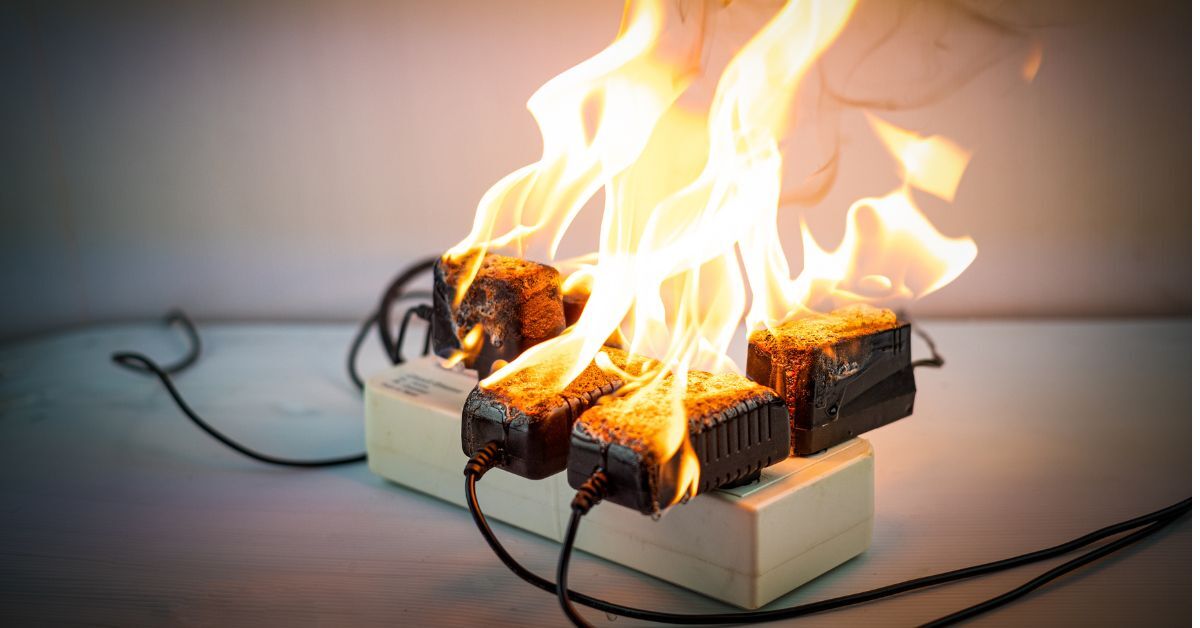CCB License#218431
Posted by: Elite Restoration LLC on December 1, 2022
Common Causes Behind Home Fire Damage
Fires occur in the United States more often than you think. On average, fire departments in this country respond to a fire every 24 seconds. That includes responding to structure, house, and outside property fires. This amounts to thousands of injuries, deaths, and billions of dollars in damages. Knowing how to prevent fires is essential. Unfortunately, avoiding fires is becoming more challenging because the world relies more on electronics. Understanding the most common fire causes can help you be more aware of preventative measures to take. Here are five common fire damage causes and safety tips to know.

Cooking Mishaps
When cooking, stay in the kitchen. Studies show almost 50 percent of residential fires occur due to cooking accidents. It may involve leaving a hot pan with food unattended or grease overheating. Keep appliances clean and change out old utensils to reduce the risk of fire danger in the kitchen.
Electrical Wiring
Studies show about 7% of residential fires are caused by electrical issues. These fires can be most dangerous because they can occur in the home without notice. They can spread before someone is aware a fire is present. If you have concerns about your electrical wiring, have it checked out by an electrician. They can check your wiring to see if it's up to date, replace any old wiring, and be aware of electrical cords throughout your home.
Dry Christmas Trees
Christmas tree fires are reported each year, with many fire departments reporting they are the most common reason fires are reported around the holidays. If you have a live Christmas tree and decorate it with electrical lights, ensure it has moisture to avoid catching fire. Avoid leaving lights on for extended periods. Also, be mindful of where you hang holiday lights in your home. Some people hang them near a fireplace which is another fire hazard.
Cigarette Smoking
Using cigarettes and candles in the home increases the chances of a fire. Whether you smoke a cigar or cigarette, ensure it is put out entirely in the ashtray. Avoid leaving a lit candle unattended, and be careful when smoking inside your home.
Accidents and Unintentional Acts
Studies show about 8% of residential fires are caused by accidents or carelessness. Be aware of what you're doing and your surroundings. Be smart and practice preventative and safety measures at home to keep fire risk low.
If a fire occurs in your home, consider working with fire damage restoration professionals if you need restoration services. They can respond to your situation quickly by removing debris and getting the restoration process started as quickly and efficiently as possible.
Frequently Asked Questions
While some homeowners may attempt DIY installation, professional installation ensures proper coverage and safety compliance, minimizing the risk of issues such as settling or compression.
While some tasks can be DIY, such as cleaning and disinfection, professional remediation is recommended for complex issues or extensive contamination.
There are a few different methods of achieving this, the most common is in part with re-roofing the mobile home after blowing insulation into the attic cavity.
Most homeowner's policies cover most water damages, but not all water damages are created equal. There can be a lot of exceptions to coverage depending on the intricacies of your policy. This is why it's a good idea to be familiar with your policy and call your agent right away when damage occurs.
As with all insurance related questions, the answer is that it depends on your coverage. Usually, though, the answer is yes. While there are some types of water damages that aren't covered by standard policies or reasons your policy might not cover the damage, if the water damage is covered by your policy the drying process will also be covered.
A good portion of water damage can be prevented by proper household maintenance. Routine plumbing maintenance, as well as sump pump and appliance maintenance, are effective ways to avoid preventable damages. If you live in a cold climate, preparing your home for the winter can also help avoid damage. Finally, it's a good idea to regularly check the exterior of your home, particularly your roof, for damage to ensure water isn't unexpectedly leaking into your home.
Seal any potential entry points, such as gaps in the roof or vents, and trim overhanging tree branches.
DIY soot removal is not recommended. Commercially available products can actually cause permanent damage to surfaces. Soot itself is primarily oil-based, but that residue also contains toxic, possibly biohazard contaminants.
Identifying the source of the water damage is one of the first steps in both the insurance claim process and before beginning to dry out and repair the damaged areas. After all, if you replace a sagging, wet ceiling that was caused by a roof leak but don't fix the roof, too, the next rainstorm will start the cycle all over again. The buckling to your hardwood floor could be caused by a leaking pipe. We will pinpoint the exact cause of your water damage and make sure the source is repaired. We make sure your restoration job is done right the first time.
We utilize a state-of-the-art blower door system that depressurizes the home and helps us track down exactly where the leaks are specifically in location. They are not where you usually think they are. Many leaks are present in the crawlspace and the attic (HVAC system included). These are the main focus areas in a weatherization job.
Related Posts
New Innovations in Home Insulation: New Products That Maximize Energy Savings
This blog post will explore the latest innovations in home insulation, examining new products designed to maximize energy savings. Whether you're (more)
How Water and Fire Damage Restoration Services Can Add Value to Your Property
Imagine this scenario: a homeowner, just back from a much-needed vacation, walks into their residence to find their ground floor submerged in water. T (more)
